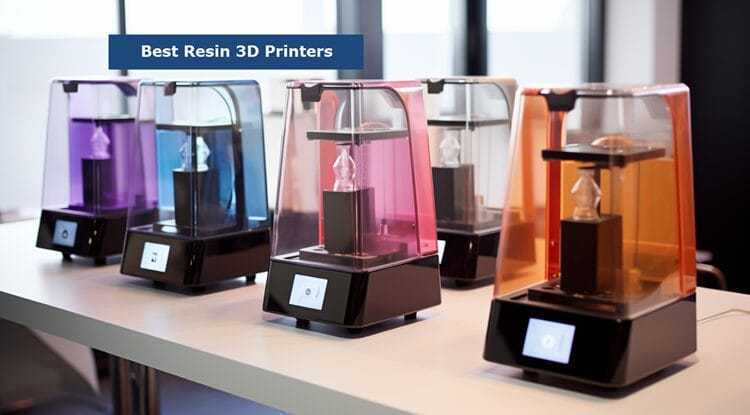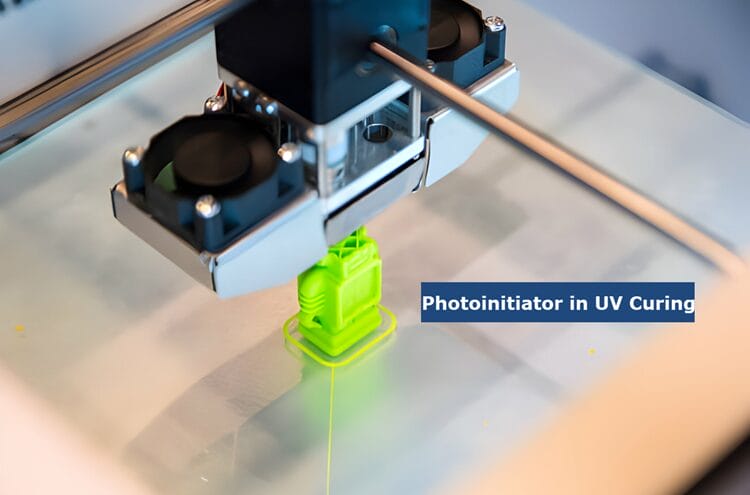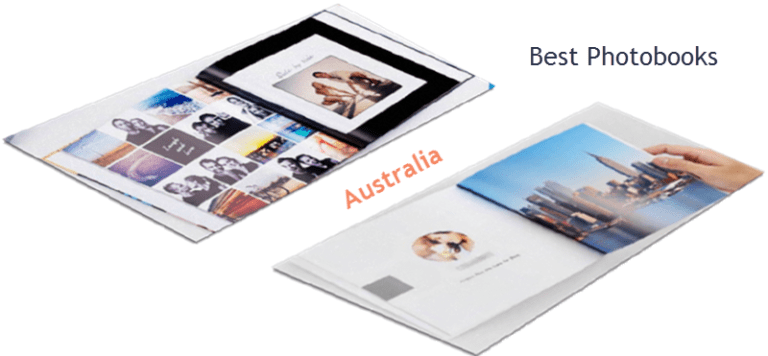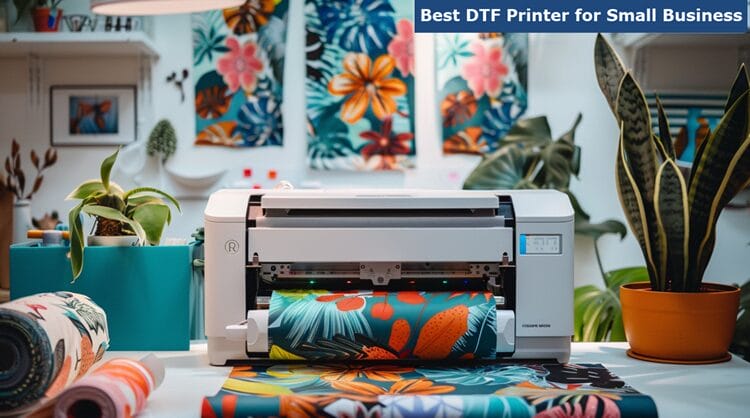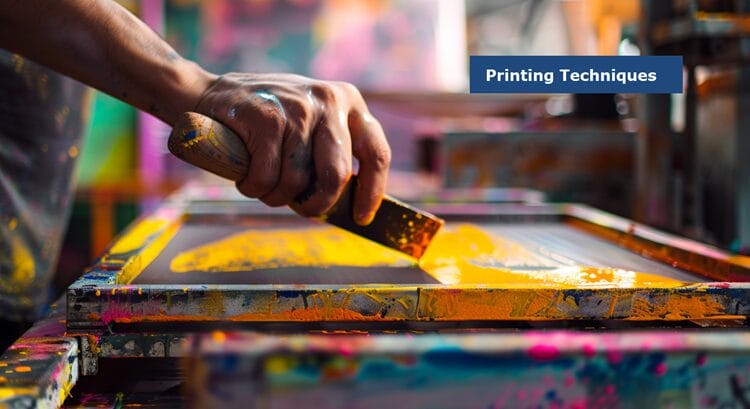
Are you an artist looking for the best scanner to capture your artwork?
We know how important it is to have a reliable and accurate scanner that can handle all of your artwork, from drawings and paintings to watercolors.
That’s why we’ve researched the very best scanners for artwork, fine artists, paintings, drawings, and watercolor – flatbed or large format – so you don’t have to.
With our selection of top-of-the-line scanners, you can rest assured that your art will be accurately captured with vibrant colors and sharp details.
And best of all, these scanners are easy to use and won't take up too much space in your studio.
What Scanner Do Artists Use?
Epson Perfection V600 is one of the most popular scanners used by artists. It offers great image quality, a built-in transparency adapter, and an advanced design that provides scanning results with ease.
This quality scanner also features an exclusive film holder, dust removal technology, and Color Restoration, which helps to restore faded colors in old photos.
Additionally, it has a resolution of 9600 for highly detailed images and fast scanning speeds for added convenience.
What Is the Best Scanner for Artwork?
Here are our team's top picks for the best scanners for artwork:
- Best Scanner for Paintings & Drawing: Epson Perfection V600
- Best for Fast Photo Scanning: Plustek Photo Scanner
- Best Large Format Scanner for Artwork: Epson Expression 12000XL
- Best Budget Scanner for Art: Canon Canoscan Lide 400
- Best Flatbed Scanner for Artwork: Canon CanoScan 9000F MKII
- Best Scanner for Watercolor Art: Fujitsu ScanSnap S1300i
- Best Artwork Scanner for Beginners: Epson Perfection V39
As an Amazon Associate, there may be small earnings from qualifying purchases at no additional cost to you!
Best Scanner for Paintings & Drawing
1. Epson Perfection V600
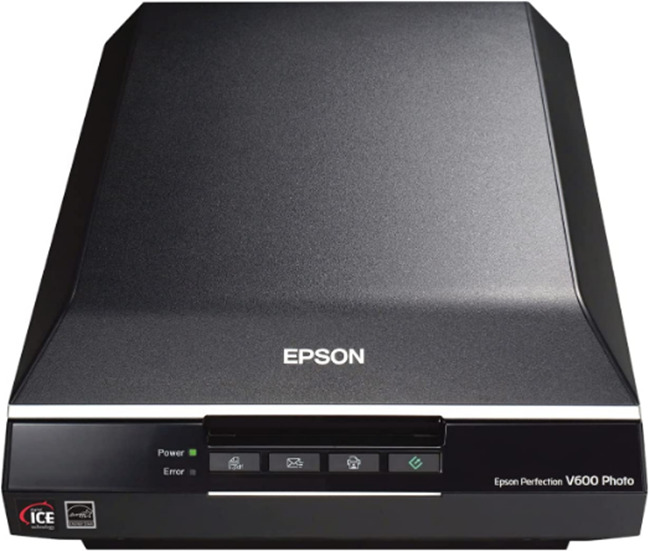
Key Features:
- Connectivity – High-Speed USB 2.0
- Included Film Holders – Medium-format & 35 mm
- Transparency Unit Size – 2.7 inches x 9.5 inches
- Flatbed Size – 8.5 inches x 11.7 inches
- Dmax – 3.4
- Film Optical Resolution – 6400 dpi
- Flatbed Optical Resolution – 6400 dpi
- Weight – 9 Pounds
- Wattage – 16.5 watts
Overview:
The Epson Perfection V600 Scanner is the perfect tool for any artist.
It can bring your artwork to life and provides extraordinary enlargements up to 17 inches x 22 inches with 6400 x 9600 dpi resolution and features Digital ICE technology that removes dust and scratches from films as well as tears and creases from photos.
It also comes with Epson Easy Photo Fix software that helps restore faded color photos in one touch! And its built-in transparency unit allows you to scan slides, negatives, and medium-format panoramic film.
ReadyScan LED Technology eliminates the need to wait for your device to warm up, so any project can be completed in an instant.
Scanning documents, copying files, scanning and emailing a document, or creating PDFs with four customizable buttons is fast and efficient, thanks to this incredible technology.
Moreover, the included OCR software, ABBYY FineReader Sprint, allows users to easily turn scanned documents into text that can be edited.
You won’t find another device like this Epson scanner on the market today – it’s not just an amazing product but an incredible experience you can have every day of your life.
User Experience:
The Epson Perfection V600 scanner is a great choice for anyone looking to scan artwork such as slides, negatives, and photographic prints.
It offers an impressive resolution of up to 6,400 x 9,600 dpi for film scanning, with the ability to capture incredible detail and texture.
This is a particularly great feature for photographers looking to print large-scale images.
In addition, the scanner has a fast speed of one minute per slide at its highest resolution setting and can produce scans at up to 100 dpi in just seconds.
It also comes with several helpful software applications that make scanning and editing easy and intuitive.
Although the Epson Perfection V600 scanner is a bit bulky and heavy due to its ability to scan paper, it is well-built and reliable.
Its spring-loaded lid ensures that the scans are precise, while its easy-to-locate on/off button makes powering up or shutting down quick and convenient.
The Epson Perfection V600 scanner is an excellent choice for anyone looking to scan art with confidence and accuracy.
Pros
- Produces high-quality scans.
- Offers various scanning dpi settings for different needs.
- The flatbed design allows for paper and photographic prints to be scanned.
Cons
- Takes longer than 1 second per slide to scan documents at higher dpi settings.
- Large and heavy size.
- Risk of slamming when opening or closing due to spring on top.
- The on/off button may not be mentioned in some of the manuals (It is near the bottom, on the right side).
Overall Thoughts:
In a nutshell, the Epson Perfection V600 document scanner for artwork offers some of the best quality scans you can get.
Yes, scanning your slides and photographs might take a little longer, but the time is well worth it! The results are stunningly sharp and vibrant and you can adjust the dpi depending on the end use.
The scanner is also big and heavy, so be careful with that spring-loaded lid.
Don't forget to check the manual to find out where the power button is located.
All in all, it's worth the investment for those looking for professional quality scans of their artwork.
Get started with the Epson Perfection V600.
Best for Fast Photo Scanning
2. Plustek Photo Scanner
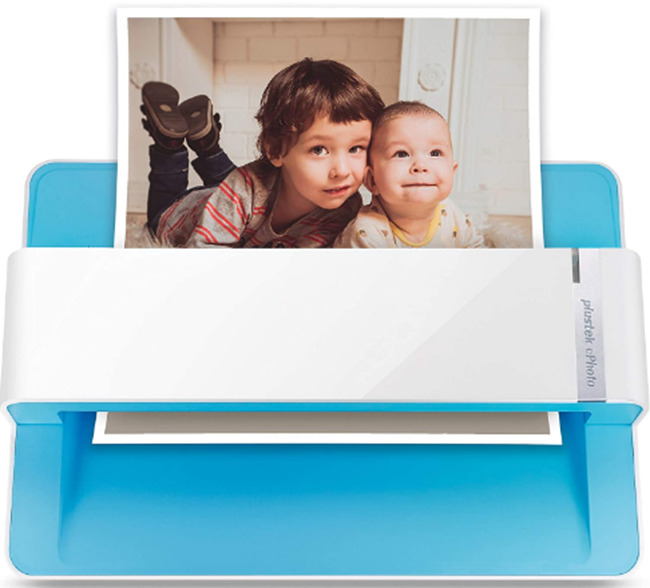
Key Features:
- Connectivity – USB
- Dimensions – 11.4 x 6.3 x 6.2 inches
- Resolution – 600 dpi
- Operating System – Windows & Mac
- Sheet Size – A4, Letter
- Wattage – 18 Watts
- Weight – 3.3 Pounds
Overview:
Are you looking for an easy way to scan photos and documents?
The Plustek Photo Scanner is the perfect solution. Not only can it scan 3×5, 4×6, 5×7, and 8×10 photographs with ease but also A4 paper documents and letters of any size.
With its optical resolution of up to 600 dpi (with two settings of 300 dpi/600 dpi), it can quickly convert about 1000 photos into digitized files within one afternoon.
Plus, it's more efficient than a flatbed scanner – just insert the photos one by one and then scan.
And with powerful image enhancement functions included, you can easily enhance and restore old faded images with a click of the mouse.
You'll love how fast and easy this scanner is – 2 seconds for one 4×6 photo and 5 seconds for one 8×10 size photo@300dpi.
Best of all, ePhoto Z300 works with both Macs & PCs (Windows 7/8/10/11, Mac OS X 10.10 to 13. x).
No matter what type of computer you have at home or work, you're covered!
User Experience:
The Plustek Photo Scanner is an ideal choice for quickly digitizing large amounts of artwork. It features a small footprint, making it perfect for use in the home or office spaces, and operates quietly.
The scanner works with both PCs and Macs and comes with its own software for easy installation and calibration. The software itself is also quite easy to use, with options for adjusting the scan dpi, rotating, and editing images as needed.
The scans themselves are also of good quality, with results that match or exceed what you would expect from a flatbed scanner.
Users have found the Plustek Photo Scanner to be an excellent choice for quickly digitizing photos and artwork.
It is reliable, easy to use, and produces good-quality scans with minimal effort.
With its low price point and intuitive software, it should be a top pick for anyone looking to digitize their photo collections or artwork quickly and efficiently.
Pros
- Easy setup
- Small footprint
- Quiet operation
- Easy-to-use software bundle
- Permits rotation and editing of scans
- Quick scanning at various dpi levels
- Easy to feed photos into the scanner
- Good results for both photos and documents
Cons
- If your laptop does not have a CD, you may need to install the drivers online.
Overall Thoughts:
The Plustek Photo Scanner is an excellent tool for quickly and easily preserving artwork and memories.
With its small footprint and quiet operation, the scanner is designed to be fast and efficient at digitizing photos, documents, and other artwork.
The scan resolutions are impressive, with 300 dpi scans happening in seconds.
The included software makes editing and rotating a breeze, allowing you to quickly archive your artwork with ease.
It's also great for freeing up space in the home by reducing the number of physical albums and photos stored away.
All in all, the Plustek Photo Scanner is an excellent choice for anyone looking to quickly scan artwork and preserve memories for years to come.
Get started with the Plustek Photo Scanner.
Best Large Format Scanner for Artwork
3. Epson Expression 12000XL

Key Features:
- Connectivity – High-Speed USB
- Flatbed Size – 12.2 inches x 17.2 inches
- Dmax – 3.8
- Flatbed Optical Resolution – 2400 dpi
- Wattage – 55 watts
- Weight – 31.5 pounds
Overview:
Are you an artist looking for a reliable scanner to capture your artwork?
The Epson Expression 12000XL is a perfect choice. If you are looking for professional-level scanning, then look no further.
This scanner can accommodate up to 12.2″ x 17.2″, with a remarkable 2400 x 4800 dpi resolution that ensures extraordinary image quality and clear detail – thanks to its micro-step drive technology and 3.8 Dmax.
Furthermore, its colorful II imaging system combines superior image processing, a fast warm-up LED lamp, and Epson MatrixCCD technology for bold, vibrant scans.
And with one-touch color restoration using Epson’s exclusive easy photo fix technology plus automatic dust removal, you can be sure that your artwork will look amazing every time.
With batch scanning capabilities that allow you to scan multiple printed images at one time and save files to both PC or Mac computers, the Epson Expression 12000XL is the perfect tool for any artist who wants to quickly create digital copies of their work without sacrificing quality or accuracy in the process.
User Experience:
The Epson Expression 12000XL is a large format art scanner designed specifically for scanning artwork and other sensitive materials.
It features advanced digital imaging technology with a 48-bit color depth, allowing for the accurate reproduction of fine details and textures in the artwork.
Its generous scan size of up to 12 x 17 inches makes it suitable for working with larger pieces.
The scanner has a 2400 x 4800 dpi resolution and features a variety of image correction settings, with options for both color and black-and-white scans.
It also includes an advanced document scanning feature, which is great for archiving collections or creating digital backups quickly.
Overall, users are praising the Epson Expression 12000XL for its impressive image quality, ease of use, and professional results.
The scanner is a great choice for artists who want to capture the details in their artwork with accuracy and precision.
As one user said, “It's perfect for digitizing my work – I'm so glad that I bought it!”
If you're looking for an advanced scanner for artwork, the Epson Expression 12000XL is definitely worth considering. It might just change the way you work with your art!
Pros
- Large format scanning.
- The small fan shuts off when the scanner goes into power save mode.
- High productivity and excellent results.
Cons
- Large and heavy size.
- A fairly loud, high-pitched fan that runs when active may bother some users.
- The plugin to scan into Photoshop may be slow.
Overall Thoughts:
The Epson Expression 12000XL scanner for artwork is an excellent choice for those needing large-format scanning.
It's big, heavy, and has a fan that runs when it's active, but its performance and results are top-notch.
The included software isn't great, but with a little effort and the help of external programs, you can get top results with this scanner.
All in all, it's a great choice for anyone who needs large-format scanning of artwork.
Highly recommended!
Get started with the Epson Expression 12000XL.
Best Budget Scanner for Art
4. Canon Canoscan Lide 400
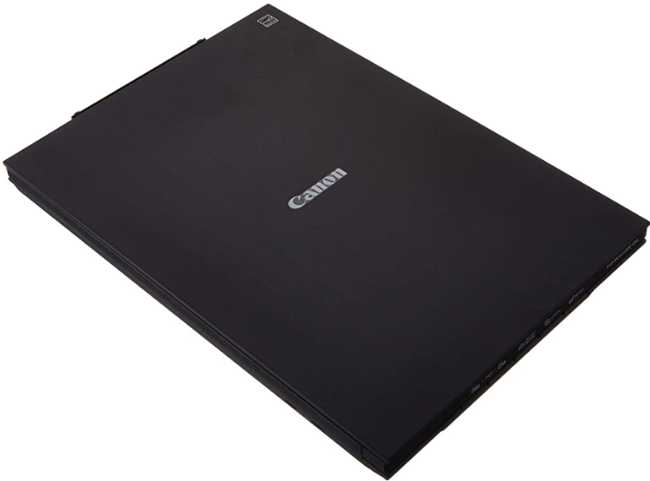
Key Features:
- Connectivity – USB
- Dimensions – 14.5 x 9.9 x 1.7 inches
- Weight – 3.60 Pounds
- Operating System – Windows & Mac
- Resolution – 4,800
- Sheet Size – 8.27 x 11.69 x 8.50 x 11.69
- Color Depth – 48-bit
Overview:
The Canon Canoscan Lide 400 is a reliable and efficient scanner for artists. It offers high-speed scanning in as fast as 8 seconds, with its included USB Type-C cable.
You can also preserve detailed photos and images, thanks to its 4800 x 4800 dpi resolution, and with image enhancements such as color restoration and dust removal, your photos will look great.
Plus, it has ‘EZ' buttons that make it easy to use – auto scan mode automatically detects what you are scanning; built-in PDF buttons let you scan and save multi-page PDFs that are editable and searchable; the paper size of 8.27 x 11.69 or 8.50 x 11.69 inches makes it ideal for artwork.
With this scanner, you'll be able to quickly digitize all your artwork without any hassle or fuss – no more worrying about fading colors or smudges on prints.
And it's a portable scanner that is compact enough for you to easily take anywhere.
User Experience:
The Canon Canoscan Lide 400 scanner is an excellent choice for those looking to scan artwork and documents.
It is a user-friendly, versatile scanner that allows users to quickly and easily scan photos, documents, and artwork with ease.
One great benefit of the Lide 400 is its affordability; at a fraction of the cost of other artwork scanners, you get a great solution for digitizing your artwork and documents.
Additionally, setup is super straightforward; all you need to do is plug in the USB cable and it works with any computer running Windows 7 or higher.
The scanner also does an impressive job of scanning photos and documents with crisp resolution.
However, one downside to the scanner is that it doesn't come with a manual (hardcopy or on CD); you have to find the information you need from Canon's website.
Additionally, the cable is relatively short—about 5ft—which may be problematic for those who want to place their scanners at more distant workstations.
Pros
- Really Inexpensive.
- Pretty simple to install on any Windows computer with Win 7 or higher.
- Does a really decent job of scanning documents and photographs.
Cons
- Doesn't come with a manual.
- The cable from the scanner is relatively short.
Overall Thoughts:
All in all, the Canon Canoscan Lide 400 is an excellent choice for those looking for a basic, yet effective, scanning solution.
It's affordable and easy to use – perfect for anyone who wants to digitize their artwork or documents quickly and easily.
Plus, its ability to deliver clear results makes it even more appealing.
Highly recommended!
Get started with the Canon Canoscan Lide 400.
Best Flatbed Scanner for Artwork
5. Canon CanoScan 9000F MKII
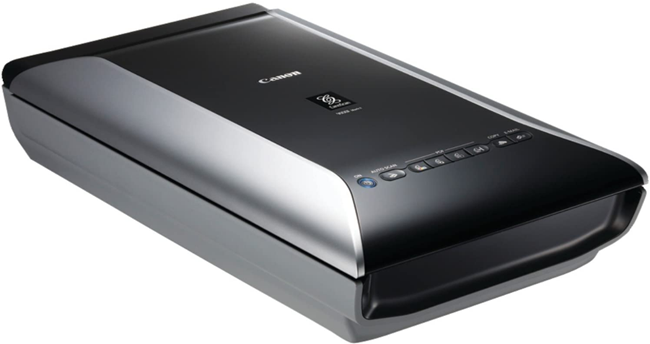
Key Features:
- Connectivity – USB
- Dimensions – 10.7 x 18.9 x 4.4 inches
- Operating System – Windows & Mac
- Weight – 10.10 Pounds
- Resolution – 10,000
- Wattage – 15 Watts
- Sheet Size – A4
Overview:
As an artist, the Canon CanoScan 9000F MKII is a scanner that can help with your artwork.
This incredible device features ‘My Image Garden‘ software, allowing users to effortlessly scan both photos and documents while also organizing their files in an intuitive manner.
It also features FARE Level 3 technology which automatically corrects photos and film, removing dust and scratches while restoring their color.
And there’s zero warm-up time with this scanner so you can get started right away!
With the Auto Scan feature, you don’t have to worry about adjusting settings manually – it automatically detects what you're scanning and adjusts accordingly.
And its super-efficient white LEDs offer lower power consumption too.
The Canon CanoScan 9000F MKII is compatible with Windows 8, 7, Vista & XP, and Mac OS X v10.6.8 to 10.7 – making it perfect for any type of user.
User Experience:
The Canon CanoScan 9000F MKII scanner for artwork offers a number of features that make it an ideal choice for those looking to digitize their art.
The versatile Linux driver, sane-backends “Pixma”, is an added advantage for users who want to scan from their preferred platform.
The power management capabilities is another plus, avoiding the need for filament lights to always be powered on.
While there is a minor disadvantage, 16-bit grayscale positives/negatives and color-reflective media can be scanned with ease. Unfortunately, 8-bit grayscale reflective (e.g., black and white photos) must first be converted to 16-bit depth color before they are transformed into monochrome images.
Aside from this, ‘My Image Garden' software and ‘Quick Menu' are virtually useless for those using a virtual machine due to the lack of 2D/3D display acceleration.
This scanner is a great choice for those looking to digitize their artwork.
Related: Best Resin 3D Printer
Pros
- Sane-backends “Pixma” is an open-source Linux driver that simplifies the process of working with different devices.
- It has an edge over the Epson V600, in terms of being more efficient and dependable with the introduction of superior power management.
- ScanGear or IJ Utility included within the Canon Driver package, is incredibly useful and more than capable of meeting your needs.
- The scanner seems very lightweight, and we like the inside cover's unique insertion which can be easily removed to scan negative/positive media.
Cons
- This device can only process 16-bit grayscale positives/negatives and color-reflective media.
- ‘My Image Garden' software (680 MB) and ‘Quick Menu' are basically useless in VirtualBox Windows XP sessions using NVidia binary drivers & Linux.
Overall Thoughts:
In a nutshell, the Canon CanoScan 9000F MKII scanner is an excellent choice for artists looking to scan artwork with good quality.
Its open-source Linux driver makes it easy to set up and get running, while its advanced menu options for ScanGear are useful and intuitive.
Additionally, its power management features make it more efficient than previous models.
The only downside is its lack of 16-bit grayscale scanning for reflective media, but this limitation can be worked around.
All in all, a great scanner with few downsides.
Get started with the Canon CanoScan 9000F MKII.
Best Scanner for Watercolor Art
6. Fujitsu ScanSnap S1300i
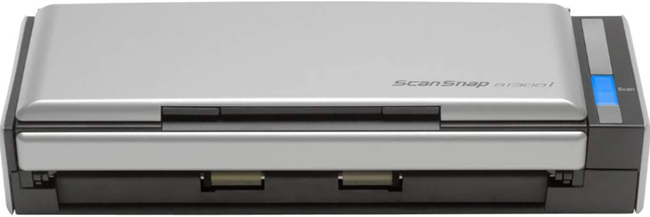
Key Features:
- Connectivity – USB
- Dimensions – 11.18 x 3.9 x 3.03 inches
- Operating System – Windows & Mac
- Weight – 3.08 Pounds
- Resolution – 600
- Wattage – 9 watts
Overview:
The Fujitsu ScanSnap S1300i is a reliable scanner for digitizing your artwork. It’s designed specifically with artists in mind, offering one-touch scanning with Quick Menu options for both PC and Mac users.
This scanner boasts an impressive scanning speed of up to 12 double-sided pages per minute and a generous capacity for the automatic document feeder, storing up to 10 pages at once.
It is a compact scanner with a design that makes it easy to take on the go.
Not only that, but this scanner also features intelligent automatic image processing including auto color detection, paper size detection, de-skew, and orientation – so you know your scans will be of high quality every time.
With the added convenience of scanning documents directly to the cloud and having them accessible from any location – think Dropbox, Google Drive, and Evernote just to name a few – life has never been easier.
User Experience:
The Fujitsu ScanSnap S1300i scanner for artwork is a powerful and convenient piece of equipment that offers users a great experience. The device is quick to set up and easy to use, with all the necessary documents and cables included.
It also comes with an intuitive ScanSnap Receipt software that allows users to quickly digitize their receipts and export them to various formats.
The scanner is also energy-efficient and eco-friendly, with a power-down feature that helps conserve power when the lid is closed.
In addition, its multi-document capabilities make it great for scanning longer documents as well as multiple receipts at once.
On top of that, its adjustable plastic parts help ensure accuracy and clarity when scanning artwork.
Pros
- Quick and efficient scanning capabilities, especially for receipts.
- Multi-document capabilities.
- Scan both sides of documents.
- Lightweight software with excellent OCR capabilities.
- Export to CSV or QuickBooks formats.
- Powers down after closing the lid.
- Can be powered via USB or AC power cord.
- Adjustable plastic parts for different-sized documents.
Cons
- May have problems with very long, wrinkled, and/or thick receipts/documents
- Issues may occur when scanning multiple receipts at a time.
- Not suitable for items such as credit cards with metal parts.
Overall Thoughts:
All in all, the Fujitsu ScanSnap S1300i scanner is an indispensable tool for any artist or business that needs to quickly and accurately digitize their artwork. It's reliable, efficient, and offers great value for its price tag.
Highly recommended!
Get started with the Fujitsu ScanSnap S1300i.
Best Artwork Scanner for Beginners
7. Epson Perfection V39

Key Features:
- Connectivity – High-Speed USB 2.0
- Flatbed – 8.5 x 11.7 inches
- Flatbed Optical Resolution – 4,800 dpi
- Dimensions – 14.4 x 9.9 x 1.5 inches
- Weight – 3.4 Pounds
Overview:
Are you an artist looking for a way to scan your artwork?
The Epson Perfection V39 scanner is the perfect device for scanning photos, documents, and artwork. It has a 4800 dpi optical resolution that ensures amazing clarity and detail in every scan.
You can also restore, archive, and share family photos with this scanner, as well as convert scanned documents into editable text with its Optical Character Recognition (OCR) software.
Plus, it comes with Easy Photo Fix technology that makes restoring color to faded photos easy.
With the Epson Perfection V39 scanner, you can easily remove dust from scanned photos using Advanced Digital Dust Correction.
And if you need to scan oversized images or photo albums, ArcSoft Scan n Stitch Deluxe 2 is included so you don’t have to worry about cropping out any details.
It is USB-powered, so no AC adapter is required – making it super convenient.
User Experience:
The Epson Perfection V39 scanner for artwork provides users with a great experience. It is easy to use, with just the press of a button required to initiate a scan.
Furthermore, its resolution is adjustable, allowing users to tailor scans to their desired quality and detail level.
Its minimal edge reduction feature also provides great accuracy and precision when scanning artwork.
The unit is also very quiet, with no noticeable noise during the scanning process.
In addition, it provides a straightforward saving process, making it easy to upload scans to an online site.
Finally, its removable lid and adjustable hinges make it possible to scan larger items while still being able to support smaller items such as photos.
The Epson Perfection V39 scanner for artwork is a great product and users have been highly satisfied with their purchase.
Pros
- Fast scanning speeds.
- Easy-to-use buttons and interface.
- Offers minimal edge reduction when scanning photos.
- Low noise level during scans.
Cons
- The Mini USB end of the cable is not robust and may need reinforcement.
Overall Thoughts:
The Epson Perfection V39 scanner is a great way to digitize artwork, providing excellent quality scans and offering users a wide range of features at an affordable price.
It's easy to use, with intuitive buttons and a simple setup that requires very little effort to start scanning.
The included software provides advanced options such as Professional mode for accurate color reproduction, as well as support for a variety of file formats. It's also quick and efficient, with bit depths up to 4800 dpi providing extremely detailed scans.
The unit is also sturdily constructed, making it ideal for frequent use.
All in all, the Epson Perfection V39 scanner is an excellent choice if you're looking for an affordable and reliable way to digitize your artwork.
Get started with the Epson Perfection V39.
What Is An Art Scanner?
An art scanner is a device designed to capture digital images of artwork, such as paintings, sculptures, photographs, and other types of visual mediums.

By using the latest in high-resolution camera technology and scanning algorithms, an art scanner can accurately reproduce the details and colors of artwork with unparalleled precision.
Not only can art scanners be used to create digital versions of artwork, but they can also be used to produce prints, share images online, and preserve artwork for posterity.
So, if you're an artist looking to take your work into the digital age, an art scanner could be just the device for you.
Why Would an Artist Need a Scanner?
Scanning artwork with a scanner is an effective way to capture the fine details and nuances that often get lost when a photograph is taken.
Scanning also allows you to make any adjustments or corrections easily, which can help make your work more professional and attractive.
Additionally, a scanner allows you to save artwork digitally for future use, giving you more flexibility with your work and more opportunities to display it.
All in all, a scanner is an essential tool for any artist.
How to Choose the Best Art Scanner
Artwork Scanner Criteria to Look out for
Here are some things to consider before getting an art scanner:
Scan Resolution
Scanning resolution refers to the amount of detail that a scanner can capture. It is one of the most important criteria to consider when selecting an art scanner and is measured in terms of dots per inch (DPI).
Higher scan resolutions lead to sharper images and color accuracy. Most scanners range from 200-1200 DPI, and for artwork scanning, we would suggest choosing one with a resolution of at least 600 x 600 DPI.
This ensures that the artwork can be accurately reproduced without any loss in scan quality or detail.
Many of the scanners we recommend offer this level of scan resolution, making them an excellent choice for digitizing artwork.
Scanning Speed
Scanning speed is a crucial factor to consider when choosing an art scanner. The speed at which the scanner can capture, process, and save images is measured in pixels per minute (PPM).
Generally, faster scan speeds are beneficial for professionals who have a large volume of documents to scan.
Scanners with speeds between 10 PPM and 40 PPM are usually adequate for art scanning. If you have larger-resolution documents to scan, then you may need a scanner with a higher scan speed.
FAQs
What Is the Best Scanner App for Art?
The best scanner app for art is Microsoft Lens.
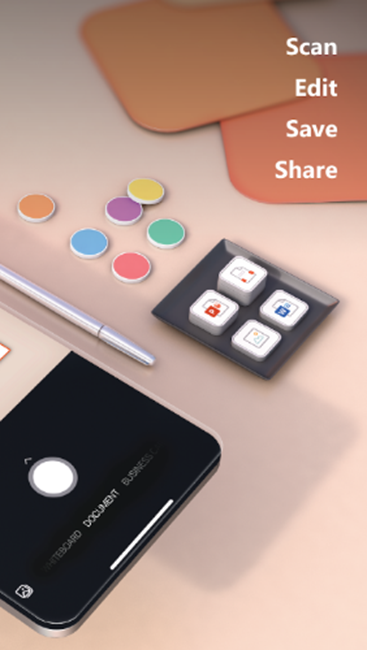
Microsoft Lens has a simple layout, auto enhance features, multi-page scans, OCR (optical character recognition) support, as well as great document transformation features to make your scans look like artwork.
It gives you the option of saving your scanned images in either JPG or PDF format.
You can also share quickly via email or social media platforms.
What Is the Best Way to Digitize Artwork?
Scanning is the most ideal way of digitizing small artworks without any texture.
It involves using either a flatbed scanner or a handheld scanner to capture the artwork in its entirety, producing an image digitally that can be manipulated and stored on a computer hard drive.
This is especially useful for archiving original artwork, as it preserves the integrity of the original piece.
Can You Scan a Canvas Painting?
You can scan canvas paintings, but it's important to consider the size and texture of the painting, as well as whether or not it has an image in it.
If a painting is larger than the scanner, your best chance is to use the right photo setup.
Scanning won't be good in highly textured paintings, especially oil paintings.
If you have access to a scanner with a removable lid, that may be your best bet in producing an accurate representation of the painting.
Whichever method you choose, make sure the lighting is right and the image isn't distorted by movement or reflection. You can then transfer the digital file to your computer for further editing or printing.
What Is the Best Way to Scan Artwork?
When it comes to the best way to scan artwork, the most important factor is quality. It’s essential to obtain the highest possible resolution when scanning artworks so that you can get a good digital representation of your painting or drawing.
How Do I Scan Large Files or Documents?
Scanning large files or documents can be difficult, especially when using traditional methods.
Flatbed scanners are one of the best solutions for scanning large documents, as they are able to scan all sizes of paper and provide more accurate results than other types of scanners.
When using a flatbed scanner, the user should ensure that they have enough space to place the document on the scanner bed and that it is properly positioned for an accurate scan.
Additionally, when scanning multiple pages, ensure that all of them are placed in a single pass to avoid having to rescale or re-scan each page separately.
With these tips in mind, you can easily scan large documents with accuracy and efficiency.
Is It Better to Scan or Photograph Your Artwork?
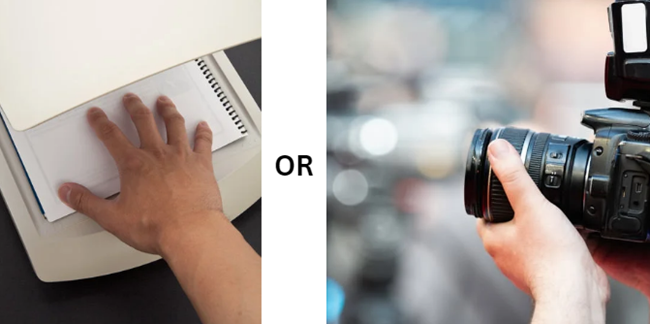
There are several factors that should be taken into consideration.
Firstly, the quality of the images produced by each process can vary significantly depending on the equipment and setup used.
Generally speaking, scanners are capable of producing higher resolution and more accurate color results than digital photography due to the fact that they read color values directly from the artwork.
Additionally, scanning is much faster and easier than photography, with many modern flatbed scanners being able to scan artworks in a matter of seconds.
Can You Scan Watercolor?
The answer is “yes”, you can scan your watercolor artwork. The process is simple, but it’s important to ensure that you do it correctly in order to get high-quality scanning.
Start by cleaning and preparing your artwork. This includes removing any dust or dirt and making sure the surface is even and smooth.
Once this is done, use a scanner with a high-resolution setting to capture as much detail as possible from your artwork.
You can then use software such as Luminar Neo to edit the scanned image and refine it even further.
If you’re an artist wondering if you can scan watercolor, the answer is “yes” With a little bit of preparation and some careful scanning, you can easily create digital versions of your artwork.
This is especially useful for archiving original artwork, as it preserves the integrity of the original piece.
Is It Better to Scan or Photograph Watercolor?
When it comes to digitizing watercolor paintings, scanning is currently the preferred method. This is because scanning achieves a perfectly uniform color reproduction.
When photographing watercolor paintings, it can be difficult to get an accurate representation of the colors due to lighting conditions and other factors.
How Do I Get a High-Resolution Scan for Artwork?
When it comes to getting a high-resolution scan for artwork, there are a few factors to consider.
High-resolution scanner
First and foremost, the scanner you choose should be capable of scanning at a resolution of 300 dpi or higher. This will provide the best quality for your artwork.
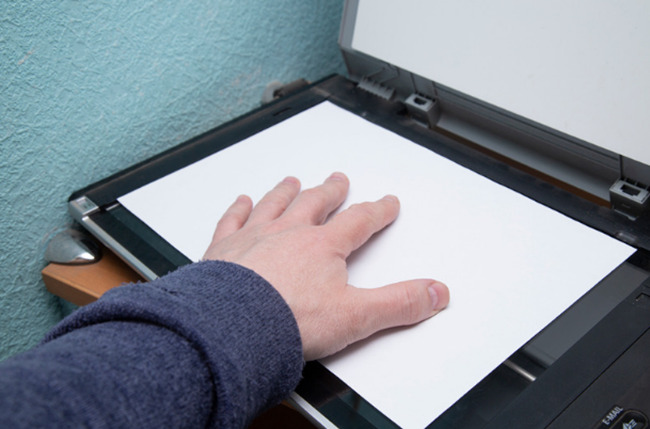
If you are looking to analyze textured paintings, then it is recommended that you use a CCD scanner, as it will be better equipped to capture intricate details.
It is also advisable to save files as TIFFs rather than JPEGs, as they are more efficient and easier to edit with CMYK than with RGB.
Finally, if your artwork is larger than 4″, you may have to digitally stitch it together.
Why Choose A Flatbed Scanner Over A Camera For Artworks?
When it comes to digitally reproducing artwork, flatbed scanners are often the preferred method because they provide superior results in terms of accuracy and color fidelity.
Unlike cameras, flatbed scanners capture all aspects of an image at once and don’t require additional post-processing for color correction.
Flatbeds also ensure consistency in scans, as they don’t suffer from uneven illumination or distortion. Plus, their larger scanning area is ideal for capturing artwork that doesn’t fit on a single page.
If you want to duplicate an artwork with crystal-clear accuracy, investing in a flatbed scanner is the way to go.
Are Art Scanners Portable?
Art scanners are designed to make scanning artwork easier and more efficient. Depending on the model, they can be portable or not.
Portable art scanners, generally, have a more compact design and are lightweight, so they don’t require much weight to be carried around. These scanners usually have a smaller diameter than non-portable versions, which makes them convenient to move from one place to another.
The extended arm feature is also available in some models, allowing for larger documents to be scanned quickly and easily.
On the other hand, there are art scanners that are heavier than their portable counterparts. These big-format scanners are usually stored permanently in a studio or workshop and are retracted frequently during transportation.
They can be quite bulky and may require additional transportation costs, but the larger size allows for greater accuracy in capturing more detailed images.
The decision of whether or not to buy a portable art scanner ultimately depends on your individual needs. However, if you are looking for convenience and portability, then a smaller model may be the right choice.
Can Watercolor, Acrylic, or Oil Paintings on Canvas Be Scanned?
Yes, watercolor, acrylic, and oil paintings on canvas can be scanned.
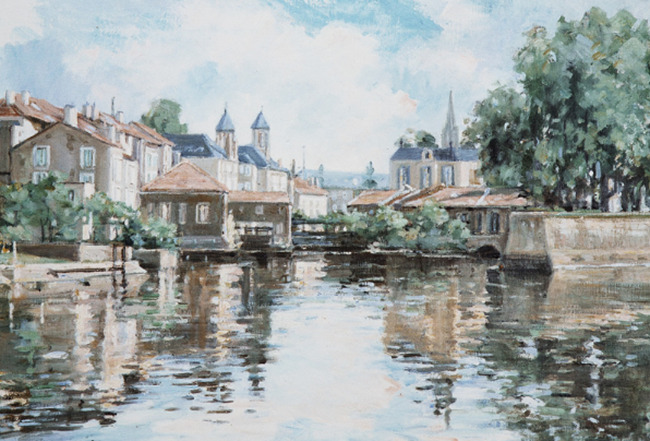
High-quality scanners are capable of capturing intricate details that can be used to create digital prints or reproductions of the painting.
The resolution of the scan will determine how faithful the reproduction is to the original painting.
When scanning a painting on canvas, it is important to use the proper scanning settings to ensure an accurate representation of the artwork.
Conclusion
Whether you are a professional artist or an art enthusiast, owning the best scanner for artwork is essential to preserving your works of art.
With so many different types available in today’s market, it can be difficult to know which one best suits your needs.
From large format scanners to flatbed and even portable options, we have outlined all the best scanners for artwork that will help make sure your masterpieces stay intact no matter where they go!
Take some time to consider the features you need most before making a purchase decision – having the best scanner for artwork could open up new possibilities and elevate your work into something truly special.
